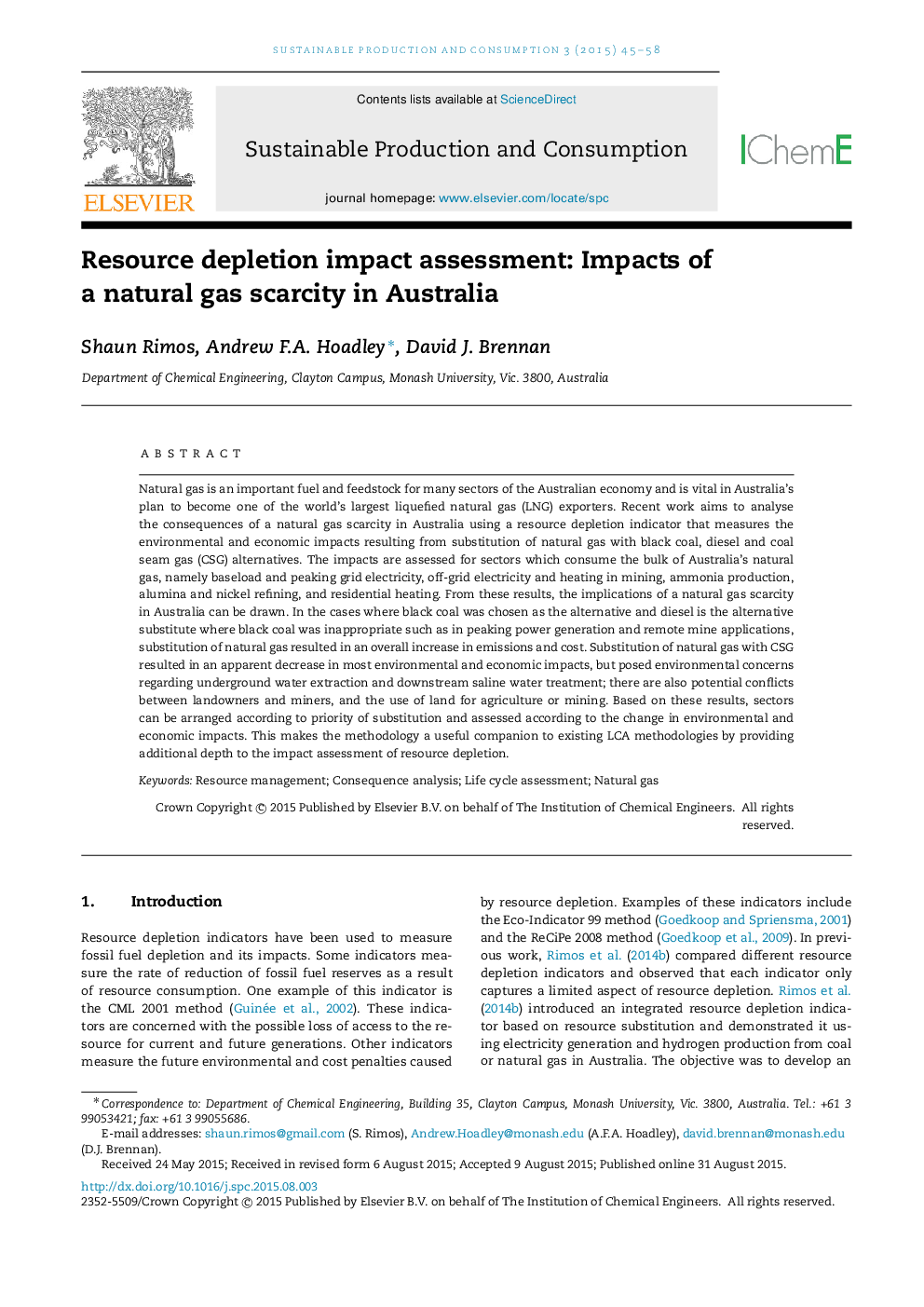| Article ID | Journal | Published Year | Pages | File Type |
|---|---|---|---|---|
| 694273 | Sustainable Production and Consumption | 2015 | 14 Pages |
•Resource depletion indicators are formed using impacts from feedstock substitution.•Natural gas substitutes examined are black coal, diesel and coal seam gas (CSG).•Substitution with black coal and diesel increases overall emissions and costs.•Substitution with CSG resulted in apparent decreases but subject to uncertainties.•Implications arising from substitution indicators are explored.
Natural gas is an important fuel and feedstock for many sectors of the Australian economy and is vital in Australia’s plan to become one of the world’s largest liquefied natural gas (LNG) exporters. Recent work aims to analyse the consequences of a natural gas scarcity in Australia using a resource depletion indicator that measures the environmental and economic impacts resulting from substitution of natural gas with black coal, diesel and coal seam gas (CSG) alternatives. The impacts are assessed for sectors which consume the bulk of Australia’s natural gas, namely baseload and peaking grid electricity, off-grid electricity and heating in mining, ammonia production, alumina and nickel refining, and residential heating. From these results, the implications of a natural gas scarcity in Australia can be drawn. In the cases where black coal was chosen as the alternative and diesel is the alternative substitute where black coal was inappropriate such as in peaking power generation and remote mine applications, substitution of natural gas resulted in an overall increase in emissions and cost. Substitution of natural gas with CSG resulted in an apparent decrease in most environmental and economic impacts, but posed environmental concerns regarding underground water extraction and downstream saline water treatment; there are also potential conflicts between landowners and miners, and the use of land for agriculture or mining. Based on these results, sectors can be arranged according to priority of substitution and assessed according to the change in environmental and economic impacts. This makes the methodology a useful companion to existing LCA methodologies by providing additional depth to the impact assessment of resource depletion.
